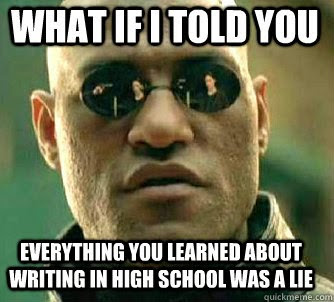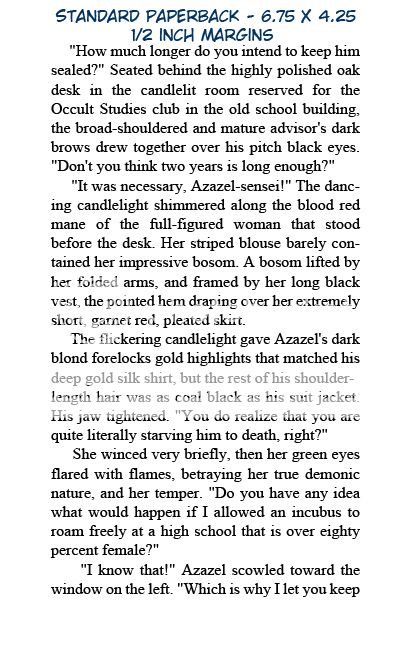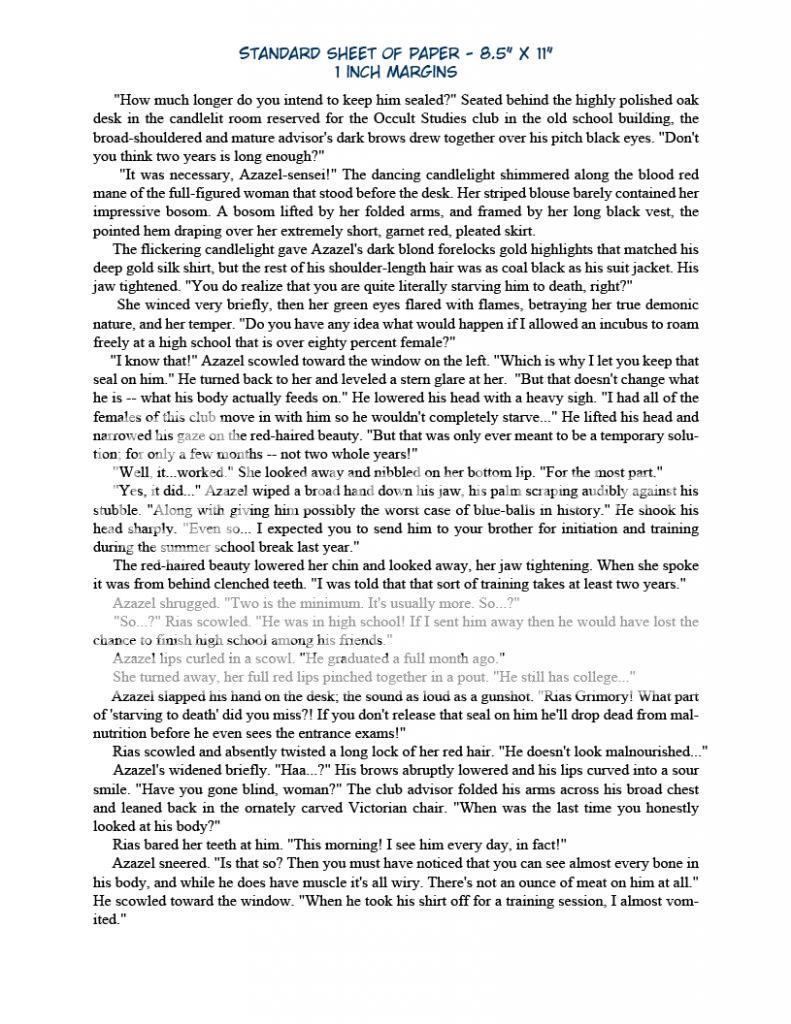The Secret to Proper Paragraphing and Dialogue
#1 of Writing Tips
What if I told you that Everything you learned about Writing Stories in high school was a LIE?
Want to Know the Biggest Secret in the Fiction Writing Industry?
It's not the Plotting they use, the Characters, the Theme, the Settings, or anything else like that.
It's the Sentence Structure.
Want to Know the Biggest Secret in the *Fiction Writing Industry? *
It's not the Plotting they use, the Characters, the Theme,
the Settings, or anything else like that.
It's the_ Sentence Structure. _
The Secret to Proper Paragraphing & Writing Dialogue
(NOT a punctuation article.)
Disclaimer: This is how I was taught to structure dialogue for publication purposes -- by my editors. If you don't want to do it this way -- Don't. (Less competition for me.)
Once you know what your characters are doing and saying, how do you get all that down on paper without ending up with a huge confusing mess?
Putting the Story on Paper.
Everybody knows that when a new speaker speaks they get a new paragraph, right? In other words, you DON'T put two different people talking in the same paragraph. Okay, yeah, so anyone who has written any kind of fiction learns this pretty darned quick, (usually from their readers.)
What nobody seems to get is that the same goes for a new character's ACTIONS. Seriously, when a new character ACTS they're supposed to get their own paragraph -- even if they don't speak!
In short, you paragraph by change in CHARACTER -- not because they_speak_, but because they ACT. Ahem... Dialogue is an ACTION. In other words, the reason you don't put two different characters' Dialogue in the same paragraph is BECAUSE you don't mix two characters' Actions. Okay?
"Wait a minute, doesn't that cut everything into tiny bits, you know, when you cut all the dialogue away then divide up all those paragraphs?"_ _
No because Character A's dialogue is supposed to be IN Character A's paragraph of actions. Character B gets his own paragraph of dialogue AND actions. You divide up a story's paragraphs by individual Character -- not by individual lines of Dialogue OR Actions.
What you definitely_don't_ do, is cut all the dialogue away from everything and mash all the different characters' actions together in one messy paragraph where no one can tell who did what.
"Where the heck did THAT rule come from?"
Strunk & White's Element's of Style , the grammar handbook.
To wit...
"In dialogue, each speech, even if only a single word, is a paragraph by itself; that is, a new paragraph begins with each change of speaker."
This is often misinterpreted as "Make a new paragraph at every new line of dialogue."
Um... No. The key phrase here is:
"a new paragraph begins with each change of Speaker."
As long as the Speaker is_Acting_, the Speaker HAS NOT CHANGED. However, every time a new character Acts, you ARE Changing Speakers -- even if they don't talk! Therefore, each new character ACTING gets a New Paragraph, whether or not they have dialogue.
How this works...
WRONG:
"You named a stuffed animal?" Toby raised his eyebrows, surprised, and Becky's blush grew brighter, creeping down her neck.<-- Two Characters acting in the same paragraph.
Becky mumbled, "I wouldn't so much say named, as gave it an identifying word to distinguish it from all the other stuffed cute kitty plushies."<-- this whole line is Abandoned Dialogue.
RIGHT:
Toby raised his eyebrows, surprised. "You named a stuffed animal?"
Becky's blush grew brighter, creeping down her neck. "I wouldn't so much say named, as gave it an identifying word to distinguish it from all the other stuffed cute kitty plushies."
What's Missing?
'Becky mumbled.' This is an unnecessary Dialogue tag. Once you link a character's Dialogue to their corresponding Actions, you no longer need the Dialogue tags.
If you really, really want to add that Becky mumbled her words, describe it as an Action. Don't TELL us that she mumbled, SHOW us.
Example:
Becky's blush grew brighter, creeping down her neck. Her voice dropped to barely a mumble. "I wouldn't so much say named, as gave an identifying word to distinguish it from all the other stuffed cute kitty plushies."
Original Message
"What if the next internals and action/dialogue are his, like:"
"You named a stuffed animal?" Toby raised his eyebrows, surprised, and Becky's blush grew brighter, creeping down her neck. Her reaction was adorable and he couldn't resist needling her some more. "I thought you hated stuffies."
"Then can you lump those actions together?"
-- Thanks in advance -- Jas
Um... NO.
-- Remember this?
"...a new paragraph begins with each change of Speaker."
When a new character ACTS they're supposed to get a new paragraph.
"You named a stuffed animal?" Toby raised his eyebrows, surprised, and_{Toby's actions -- Becky's Actions}_ Becky's blush grew brighter, creeping down her neck.
Becky didn't say anything, but she IS acting --a blush is an action-- therefore Becky gets her OWN paragraph.
Adjusted:
"Toby raised his eyebrows, surprised. You named a stuffed animal?"
Becky's blush grew brighter, creeping down her neck.
This is incorrect too:
"You named a stuffed animal?" Toby raised his eyebrows, surprised.
Actions go BEFORE Reactions
Toby was surprised so he commented: "You named a stuffed animal?" He didn't comment and THEN become surprised.
Adjusted:
Toby raised his eyebrows, surprised. "You named a stuffed animal?"
All together now!
Original:
"You named a stuffed animal?" Toby raised his eyebrows, surprised, and Becky's blush grew brighter, creeping down her neck. Her reaction was adorable and he couldn't resist needling her some more. "I thought you hated stuffies."
Adjusted:
"Toby raised his eyebrows, surprised. You named a stuffed animal?"
Becky's blush grew brighter, creeping down her neck.
Her reaction was so adorable, Toby couldn't resist needling her some more. "I thought you hated stuffies?"
Original Message
"But when you do that, it looks so...choppy on the page. There's ton's of empty white space!"
-- Hates Empty Space
Yes, it looks choppy on the page, but its Far More Important that there is absolutely no doubt in anyone's mind as to who is acting and who is speaking.
Another Example:
"Don't help me. I'm fine by myself," she told him, not bothering to be polite. He looked surprised and perhaps a little hurt. She heard another voice.
"Geez, you're pretty full of yourself, aren't you?" She got to her feet and brushed herself off, glancing in the direction of the newcomer. She nearly recoiled in shock. Another handsome guy. He crossed his arms over his chest. "He was just trying to help you." He told her. She readjusted her bag and said.
"I don't recall asking for help."
By the way, once you separate each of your character's actions into new paragraphs and reconnect each character's dialogue to their actions, you won't need dialogue tags such as "said" because your character's actions are the identifiers for your dialogue.
With actions separated and dialogue attached.
"Don't help me. I'm fine by myself." She didn't bother to be polite.
He looked surprised and perhaps a little hurt.
A new voice called out. "Geez, you're pretty full of yourself, aren't you?"
She got to her feet and brushed herself off, glancing in the direction of the newcomer. Another handsome guy. She nearly recoiled in shock.
He crossed his arms over his chest. "He was just trying to help you."
She readjusted her bag. "I don't recall asking for help."
If you truly loathe all that white space, then fill it in with more actions, description, and internal narration observations.
Original Message
But what about when someone is watching someone else, or feeling someone do something to them?
-- Concerned about Observation
This seems perfectly fine, right?
He_watched_ her shake her butt.
He_felt_ her skin move against his.
However, once you take this into account:
"...A new paragraph begins with Each Change of Speaker."
When a new character ACTS they're supposed to get a new paragraph.
Not so fine after all. You have two people acting in the same line -- in Both Cases.
The way around this little gem of a problem, is to SHOW the event by character rather than TELL it in one lump.
You begin by dividing the actions by Character:
He watched her.
She shook her butt and her skin moved against his.
He felt it.
Seems kind'a...short eh? That's because those lines TOLD you what happened, instead of Showing you what happened, so there are all kinds of details missing. Once you add enough details to paint a whole picture...
Adjusted:
From his seat at the edge of the stage, he watched her.
Tall, svelte, and in the skimpiest bathing suit he'd ever seen, she moved in close and shook her butt. The round, firm flesh jiggled enticingly against his face.
His cheeks were subjected to the most incredible, though slightly sweaty, facial massage ever.
KILL the Dialogue Tags.
Seriously.
When you have an action with a line of dialogue, you don't need Dialogue tags, such as "he said" -- at all. You already know through their actions WHO is speaking.
Dialogue tags are only ever needed when you don't have any other way of identifying the speaker.
HOWEVER, if you have no other way of knowing who is speaking than dialogue tags, then you have committed the heinous crime of:
Dialogue in a Vacuum
Also known as "talking heads syndrome."
A book with nothing but reams of dialogue marked only by dialogue tags means that while people may be talking, there is no PICTURE. The mental movie has stopped and only the sound-track is playing. Compare it to a Radio Show with no sound effects.
I don't know about you, but when I go to read a story, I want to SEE what I'm reading like a movie, not listen to a radio show.
Memorize this:
Readers always interpret what they read the way they want to see it -- unless you SHOW them what you envisioned.
In other words...
**What CAN be misunderstood
WILL be misunderstood.**
Leave Nothing to Misinterpretation.
Readers will ALWAYS make whatever assumptions come to mind about what they are reading. When a reader realizes that what they thought was going on -- wasn't, they'll get confused, and occasionally pissed off.
Unmarked blocks of dialogue are painfully EASY to get lost in.
I remember reading one whole page of un-tagged action-less dialogue only to find out that I had two of the characters reversed. Did I reread that whole page to figure out what was going on? Hell no! I tossed the book across the room. (In fact, it's still on the floor gathering dust bunnies.)
"But, isn't that what 'said' and other dialog tags are for?"
Just for the record...
Using dialogue tags is Not against the rules. Dialogue tags are a perfectly viable way to identify who is speaking -- it just makes that part of the story BORING. (I don't know about you, but I won't read something that bores me.)
I choose to write my dialogue without using "said" unless I am actually describing a change in voice, tone, or volume in the same paragraph. And even then, I try to avoid them. I use the speaker's actions to define who is speaking to whom.
I use...
ACTION TAGS
_"What the heck is an Action Tag?" _
BODY LANGUAGE
Language is Visual not just a bunch of words. Watch the average conversation between two people. 90% of that conversation isn't in what's spoken, it's in what they are DOING as they are speaking. It's in their Body Language. Body-language cues the reader as to what is going on in a character's head - in ADDITION to dialogue and internal narrative.
Action and body-language tags on dialogue are Not just for Decoration.
Stories are Mental Movies you play in your imagination. I don't know about you, but I HATE to be interrupted when I'm involved in a good movie. If I have to stop and reread a section just to figure out what the heck is going on, I've been interrupted. One too many interruptions and I'm switching to another story -- with no intention of continuing with something that's just too much work to get through.
Action tags keep the mental Movie rolling and the MEANING of what is being said crystal clear. A small simple action can tell you right away, what's going through the speaker's head.
Don't just SAY it! ~ SHOW IT!
"I love you too." She rolled her eyes and sighed dramatically. "Oh yes, I truly do love you."
"I love you too." She dropped her chin and pouted. "Oh yes, I truly do love you."
"I love you too." She glared straight at him. "Oh yes, I truly do love you."
"I love you too." She turned away and wiped the tear from her cheek. "Oh yes, I truly do love you."
WHY I loathe the word "said."
To be perfectly clear, it's not JUST the word 'said', I hate ALL Dialogue Tags inclusively. I utterly refuse to use them.
Why?
Because they're wasteful. They clutter up dialogue while slowing down actions, and they use up word-count that could be far better used elsewhere.
I don't believe in putting anything in my fiction that isn't useful. If it doesn't add to the character or the plot, it gets eradicated. Dialogue tags are too easily replaced by something that actually adds to the story, such as an action, a facial expression, a spot of description, or a character's opinions.
Just for the record, I write extremely dialogue-heavy fiction. When I find that a dialogue tag is indeed needed in my story to identify who is talking, I see it as a red flag that indicates that all action has come to a screeching halt. Nothing is Happening other than talking; also known as: Talking Heads Syndrome.
When that happens, I find some way to fill that space with something useful to the story such as an action, a facial expression, a spot of description, or a character's opinions -- ANYTHING other than a dialogue tag.
But those are MY feelings on the subject. Your mileage may vary.
Dialogue tags ARE a legitimate form of sentence structure. When there is no other way to identify a speaker, dialogue tags are indeed a viable option.
What about Punctuation for Dialogue?
- Go here:http://theeditorsblog.net/2010/12/08/punctuation-in-dialogue/ Read that.
Paragraph Aesthetics
Original Message
"I suppose the issue I have is with the aesthetics of paragraphing. Though text is not comparable to a visual medium such as film, it is still something that we have to view with our eyes."
Actually, text aesthetics -- the way the words appear on the page -- seems to be a HUGE bone of contention.
Original Message
"...The way I see it, your example suggests that I break my text up into a lot of little paragraphs. Given this understanding, in a scene rich with alternating action, it looks like I'll be left with a lot of one-line paragraphs. ...I'd greatly appreciate it if you clarified this situation. I suppose that is the trouble with having to jot down the basics, you can't expand on the little details of the rule. ^_^
Paragraph Aesthetics - Illustrated
-- The way a story appears on a standard 9.5 x 11 inch piece of paper is NOT the way to judge whether or not one's paragraphs are too long or too short. A story viewed on a browser page carries even less weight.
Why not?
-- Because Fiction is generally printed on pages HALF the size of a full sheet of paper. What appears to be a lot of short little paragraphs on the "internet page," are NOT so short or so little once you put them on the Printed page.
The standard sizes for printed Fiction are: paperback (4.25 x 6.75 inches), and trade paperback (5.5 x 8.25 inches.) Hard-cover books use the same size page as a Trade. Only coffee-table books possess printed pages anywhere near the size of a standard sheet of paper.
Personally, I could care less what my text looks like on the page. As far as I'm concerned, making the story as clear and easy to read as possible is far more important to me than what the text looks like. If I have done my job well, no one will even notice the words - only the story unfolding in their imaginations.
As for internet reading, I'm completely baffled why anyone would_care_ how it looks on the browser page. All you have to do is narrow the window and the text adjusts.
Visual Aids:
ALL examples are 12 pt. Times New Roman font.
~~~~~~~~~~~~~~~~
Standard Paperback 6.75 x 4.25, 1/2 inch margins:
| Full-Size: Right-Click > View Image |
Trade paperback 5.5 x 8.25, 1/2 inch margins:
| 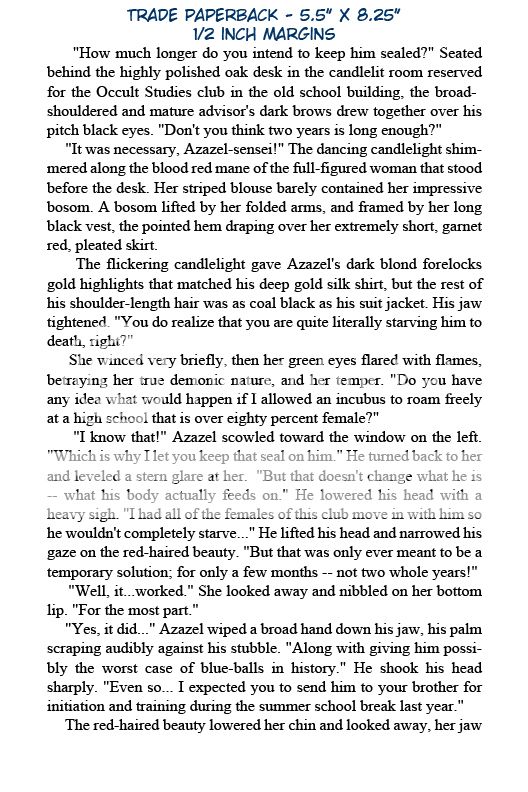 |
|
| Full-Size: Right-Click > View Image |
Standard sheet of paper 8.5" x 11", 1 inch margins:
| Full-Size: Right-Click > View Image |
_ Now _ do you get it?
Original Message
"Also, I hope you don't mind, but did you come up with the rules yourself, through experience and trial and error, publisher's advice, or is there a handy guide I can employ? Obviously, I quite loyally follow Strunk and White, but I don't think it talks about this subject much. Is there a book that YOU use?"
Let's start here:
"...did you come up with the rules yourself, through experience and trial and error, publisher's advice...?"
YES -- to all of the above, plus editor hounding and long chats with a number of extremely well-established fiction authors. In addition, I've read a crap-load of how-to books. I'm pretty sure I own, and have practically memorized, just about every book "Writer's Digest" has put out.
My writing advice posts are the results of taking all the info I'd crammed into my head and condensing it into small bite-sized, chew-able, pieces that are easy to remember and much easier to apply. Rather than waste people's time on theory, I focus on application.
As for recommended reads... Unfortunately, there is no one guide that shows it all. Not One. However, there are two books I can't praise highly enough. As far as I'm concerned, they are VITAL reading for fiction writing.
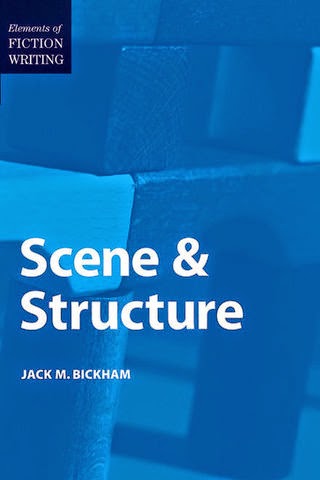
SCENE & STRUCTURE by Jack. M. Bickham
[
](https://3.bp.blogspot.com/-8MqLi789vr4/VSg_skzUGcI/AAAAAAAABpw/xGew_uAgcec/s1600/narr.jpg)
THE WRITER'S JOURNEY by Christopher Vogler
There are lots of other books I could recommend, but these are the two "Must Haves" if an author really, REALLY wants to write fiction well.
Enjoy!
